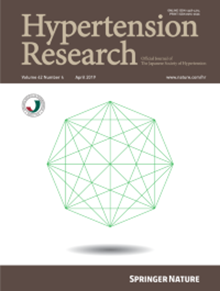Office and home blood pressure and their difference according to frailty status among community-dwelling older adults: the NOSE study
IF 4.3
2区 医学
Q1 PERIPHERAL VASCULAR DISEASE
引用次数: 0
Abstract
The relationship between frailty and blood pressure (BP) is inconsistent, and limited research has compared BP by frailty status using long-term home BP measurements. We aimed to identify office and home BP and determine differences according to frailty status, stratified by taking antihypertensives in community-dwelling older adults. This cross-sectional study was part of the ongoing non-randomized intervention NOSE study. Participants were aged ≥ 64 years. Frailty was categorized robust, pre-frailty, or frailty using the revised Japanese version of the Cardiovascular Health Study criteria. Office BP was measured in survey settings, and each participant was instructed to take home BP. We used the average home BP for 4 weeks post-survey. An analysis of covariance analyzed the relationship between frailty and office and home BP, and their differences stratified by antihypertensive use. We included 418 older participants (mean age: 72.8 years); 39.5% were male, 40.4% were taking antihypertensives, and 6.7% had frailty. Individuals with frailty taking antihypertensives had higher home morning systolic BP (SBP) than those with robust (134.2 vs. 145.7 mmHg, P = 0.018) and pre-frailty (135.6 vs. 145.7 mmHg, P = 0.024). The difference between office and morning home SBP in treated participants was 7.1 mmHg (robust), 4.7 mmHg (pre-frailty), and −5.1 mmHg (frailty), showing significant differences (robust vs. frailty: P = 0.005, pre-frailty vs. frailty: P = 0.016). Home morning SBP was higher in individuals with frailty taking antihypertensives compared to those without frailty, and it may be higher than office BP. Individuals with frailty should measure home BP for good BP control.

求助全文
约1分钟内获得全文
求助全文
来源期刊

Hypertension Research
医学-外周血管病
CiteScore
7.40
自引率
16.70%
发文量
249
审稿时长
3-8 weeks
期刊介绍:
Hypertension Research is the official publication of the Japanese Society of Hypertension. The journal publishes papers reporting original clinical and experimental research that contribute to the advancement of knowledge in the field of hypertension and related cardiovascular diseases. The journal publishes Review Articles, Articles, Correspondence and Comments.
 求助内容:
求助内容: 应助结果提醒方式:
应助结果提醒方式:


